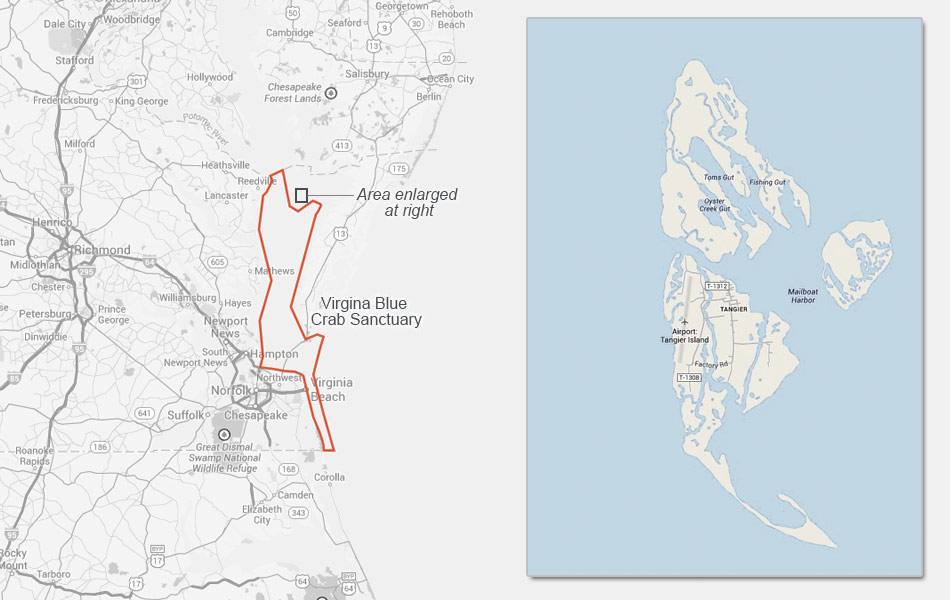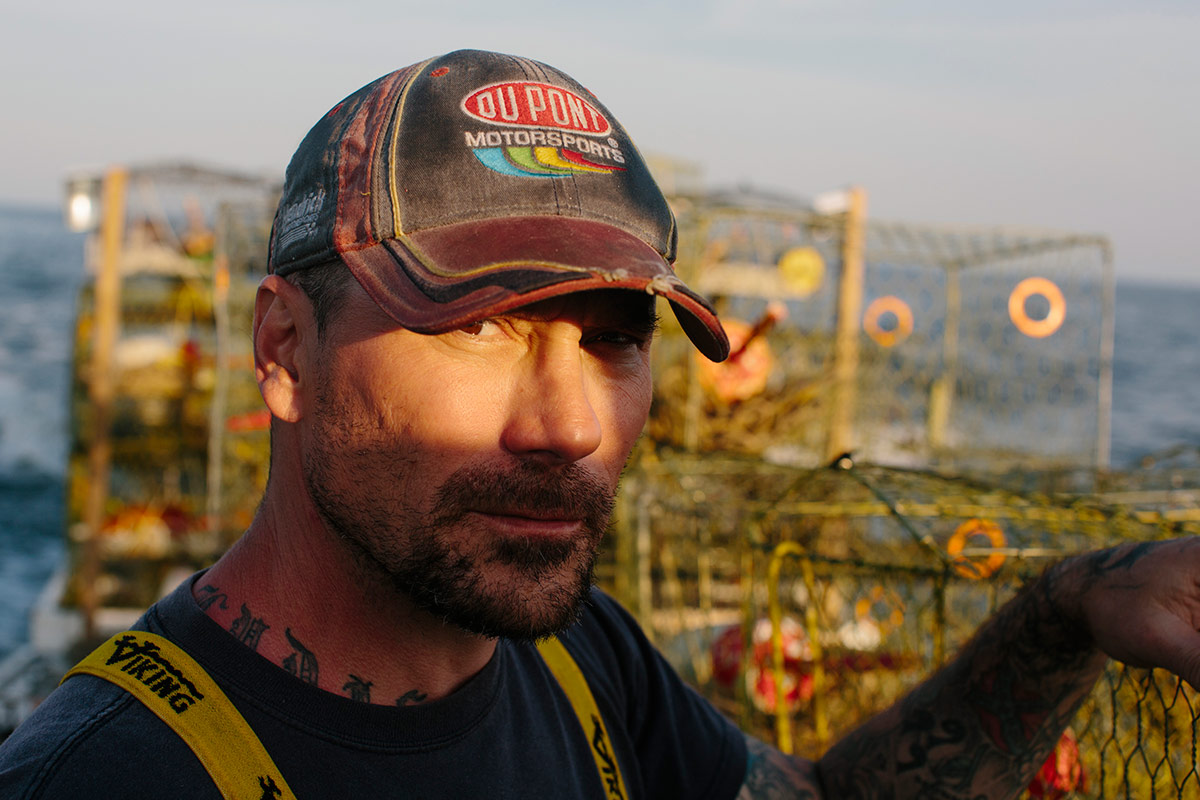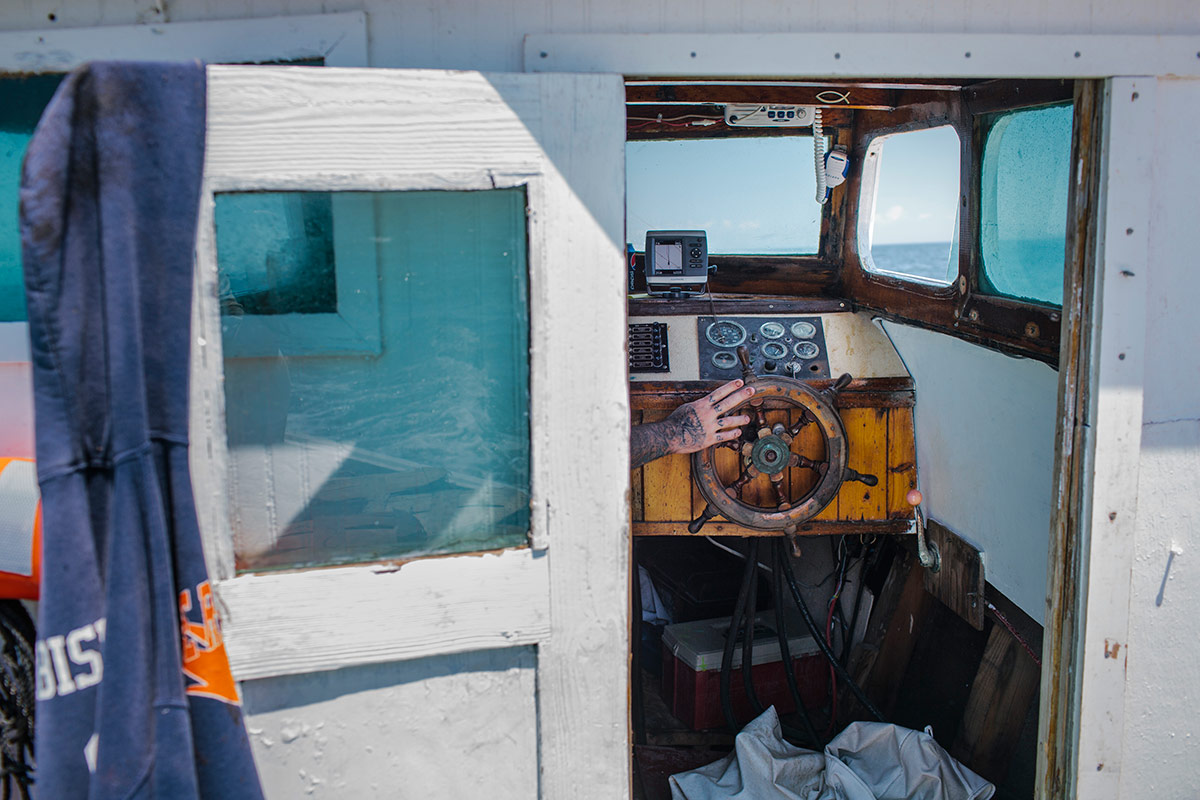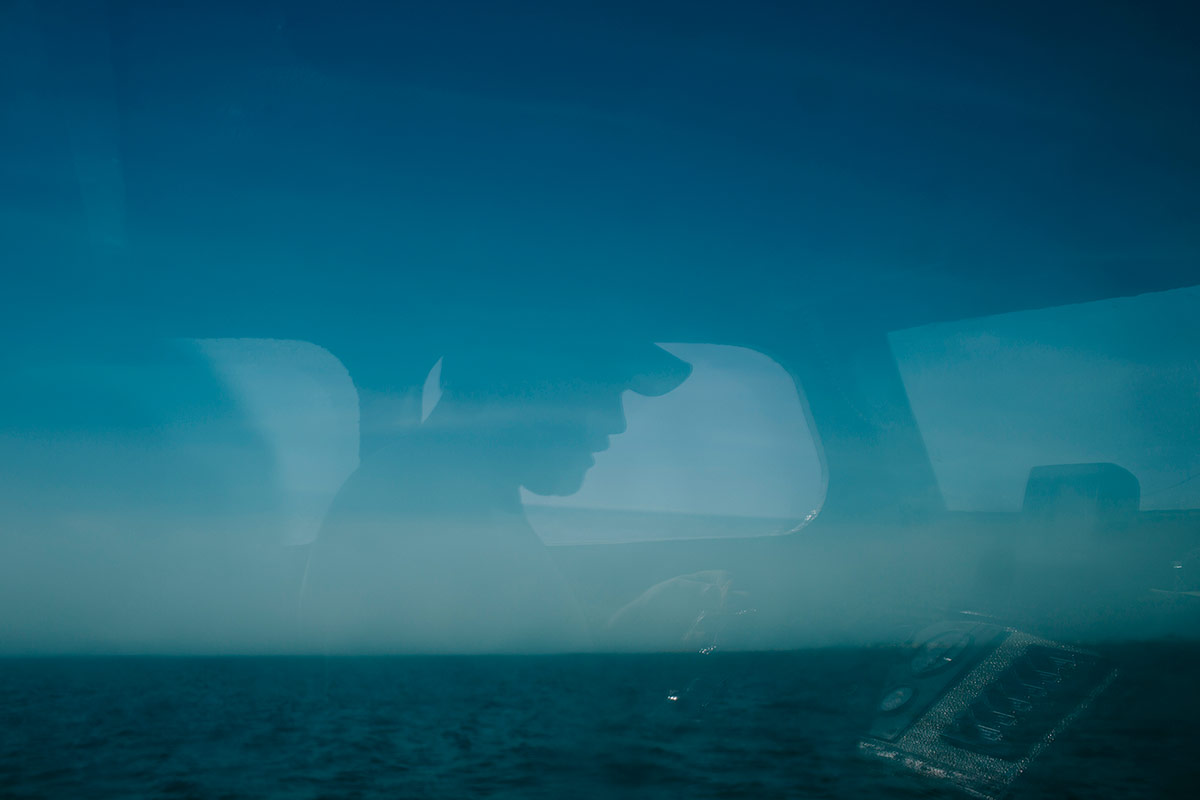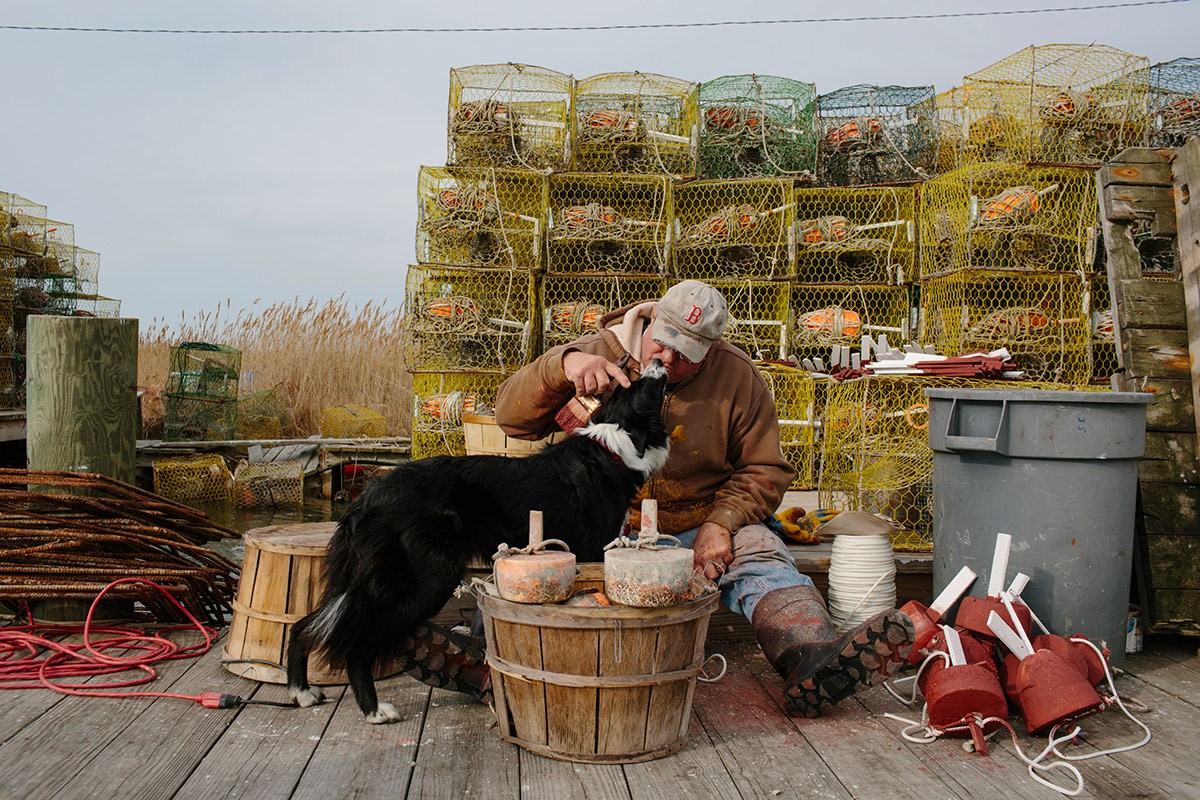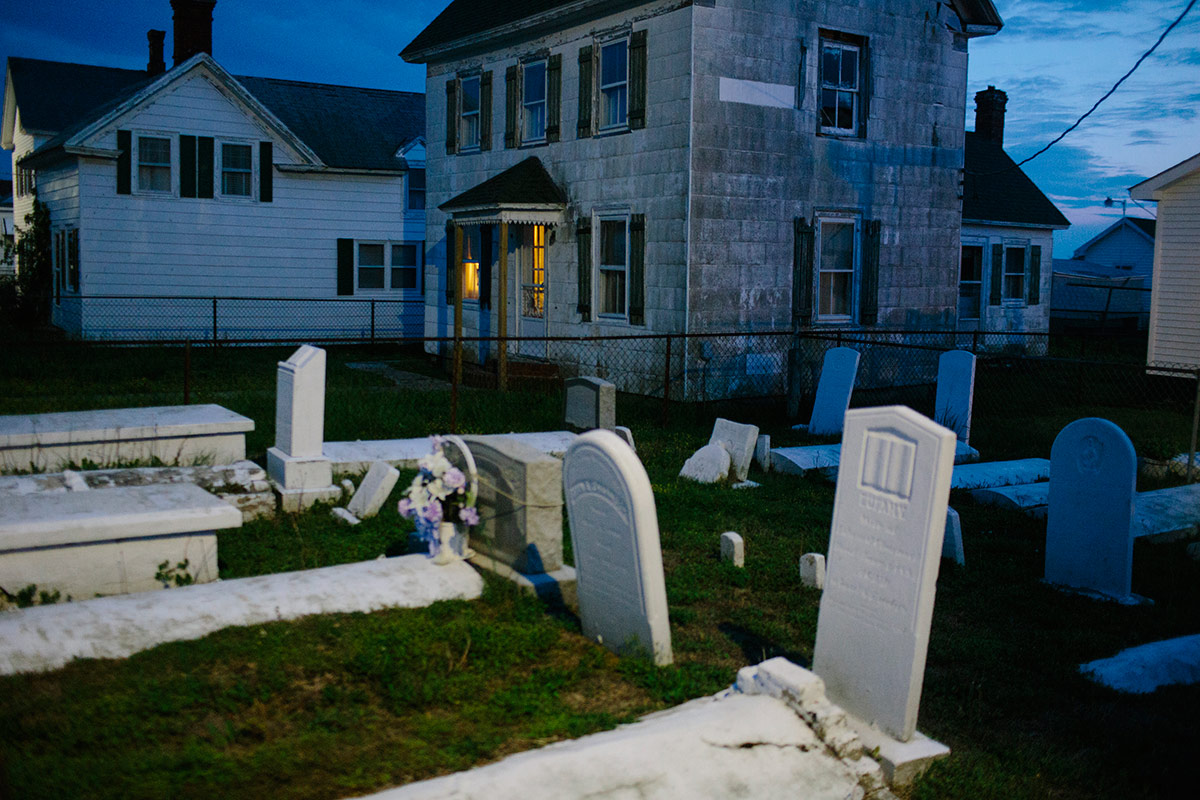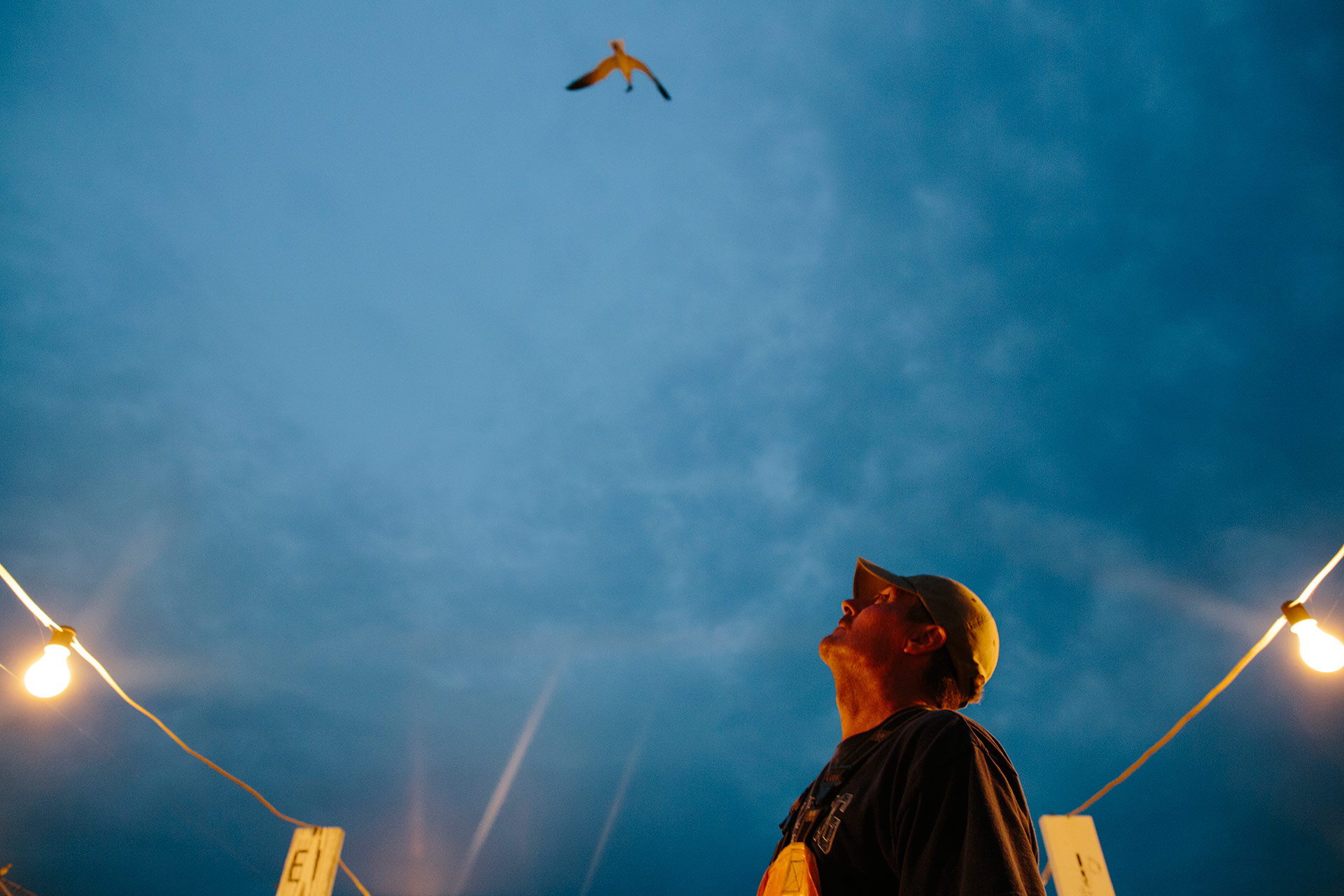
Treasured Island
The people of Tangier fear their life, land and heritage could wash away
TANGIER ISLAND, Va. — As in many places, conversations on this remote island in the Chesapeake Bay tend to steer toward the weather. But here it's not just small talk.
A long winter has chilled the water so it's still too cold to catch crabs even on the last day of March — exactly two weeks after crabbing season started. Most of the island's watermen — who oyster in winter and catch blue crabs in summer — haven't earned a penny in over a month.
When they do talk about the weather on Tangier, it doesn't sound like most places either. "Crabs," for instance, is drawn out to allow an extra syllable or two: "cr-aeae-uh-bs."
The voice of Chuck Pruitt bounced off the wall of the old Double Six sandwich shop, a bellow amplified by his Tangier Island accent.
(Click the red arrow to listen to an audio recording of the quote in the text.)
"I think it's supposed to get nice after today, from what I hear. Ain't windy over at the railway!," he said.
"御仕置五人組帳2," he said.
Translation: The railway is where Tangier's watermen are getting their boats, or "rigs," ready for the new season.
The island's vintage dialect — traced to its early settlers from Cornwall in southwest England — isn't the only thing that sets it apart. Here, families bury their loved ones in their front yards and townsmen meet for coffee at the power plant every afternoon. Boys spend summers navigating the meandering creeks on their skiffs, and baby shower announcements are taped to public buildings, since the whole island is invited anyway.
Tangier Island — just 3 miles long and 1 mile wide — is a step back in time, but with a very hazy future. The people's language, their way of life, the very ground they walk on: It's all facing extinction.

Scroll for more
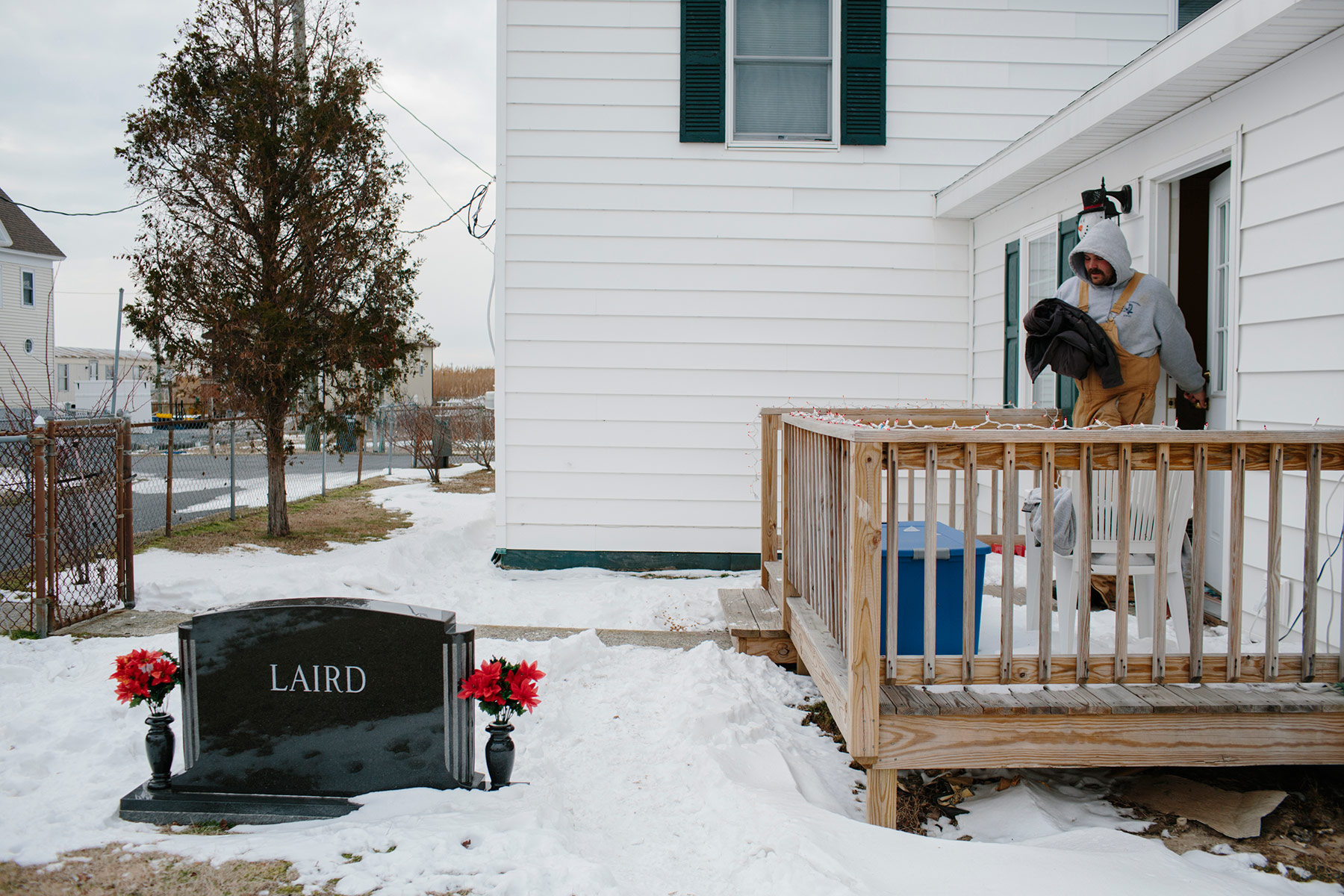
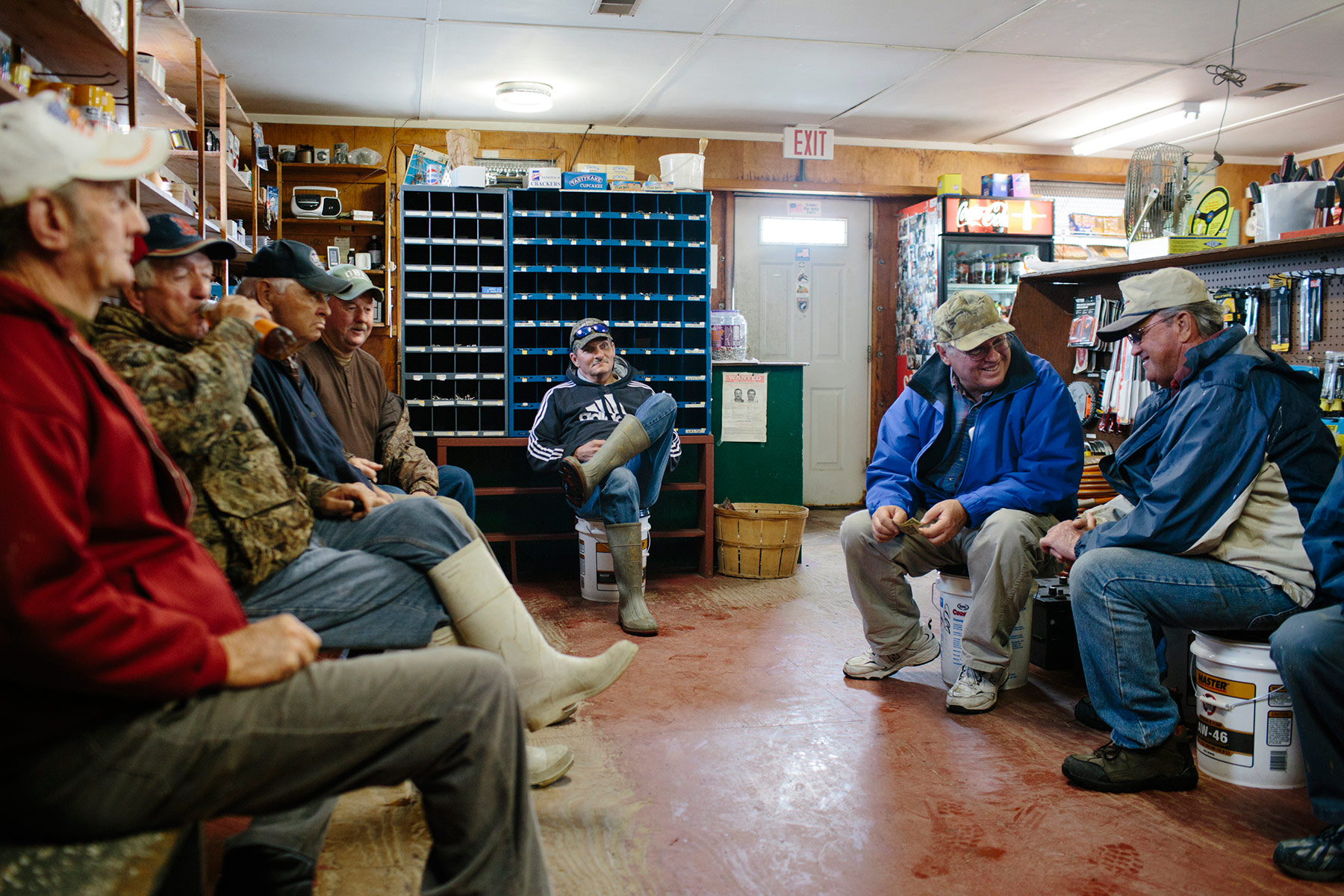

Though only 12 miles off the coast of Virginia, Tangier is struggling to — literally — stay afloat. State regulations on oystering and crabbing have hit the island especially hard. Meanwhile, Tangier is sinking and eroding, losing as much as 15 feet a year on the western shore alone.
"You can do a lot of things to deal with sea level rise — bring in land, raise your house," said Scott Hardaway, marine scientist supervisor at Virginia Institute of Marine Science (VIMS). "But you have to deal with the fact that it is rising, and you still get beat up by storms. I'm not sure at what point [the people on Tangier] start leaving."
Young people are already abandoning Tangier, heading off to college on the mainland or to work as merchant marines on tugboats up and down the East Coast. Residents who stay worry that they're witnessing the last generation of Tangier watermen, with only a few dozen left, most of them over 50. And that if something isn't done to halt the erosion, the next Isabel-caliber hurricane will wipe out the island completely, taking 400 years of heritage with it.
At its height in 1930, Tangier was home to nearly 1,200 people. By 2000, that number had dropped to 600. Residents say about 470 people live there today. More than a quarter of homes and trailers sit vacant, according to census data.
As the population shrinks, the graveyards grow. Tangier is full of family cemeteries, front yards littered with the tombstones of generations of Crocketts, Pruitts, Eskridges, Parks and Dises.
Capt. John Smith discovered Tangier in 1608, naming it and other islands Russell's Isles, after the doctor aboard his ship. How it became known as Tangier in later decades remains a mystery. Pocomoke Indians are believed to have lived — or at least summered — on Tangier before that, and to this day Tangiermen (a label that includes women) find primitive tools, jugs, arrowheads and other artifacts.
Just about every home has a satellite dish, and on a long weekend in March, 16-year-old Nathan Bonniewell strolled around playing "Wrecking Ball" on his iPad, connected to a handheld speaker. While technology allows the residents to be well versed in life on the mainland, even Miley Cyrus can't expunge their distinctive language.
According to David Shores, a Tangier native and author of "Tangier Island: Place, People and Talk," the island's distinctive dialect was influenced by the likely lower-class British men and women who settled there. It's changed little since the Civil War — remaining what Shores calls a "curious mixture of double negatives, clipping, slang, nicknames . . . [and] 'talking backwards.'"
Local Bruce Gordy, a former schoolteacher, has been cataloguing Tangier's unique expressions.
If you're quare, you're disagreeable. If you stink, you've got the mibs. If you're thirsty, you might say you're dry as Peckard's cow, Peckard being an old farmer.
Then there's the backwards talk.
A sampler of Tangier talkSpeakers: Bruce Gordy, Michelle McCready, Gary Parks, and James "Ooker" Eskridge
"Backwards talk is a way to emphasize something by saying the opposite — the literal opposite of it," Gordy explained.
If you say a woman is "ugly," that means you think she's pretty. If it's a "pretty day," it's probably storming.
"If something's real good, on the mainland we say, 'Oh, that's great!' We wouldn't. We would say, 'Well, that's poor!' Like we're going to Disney. 'Going to Disney? Well, that's poor!'" Gordy said.
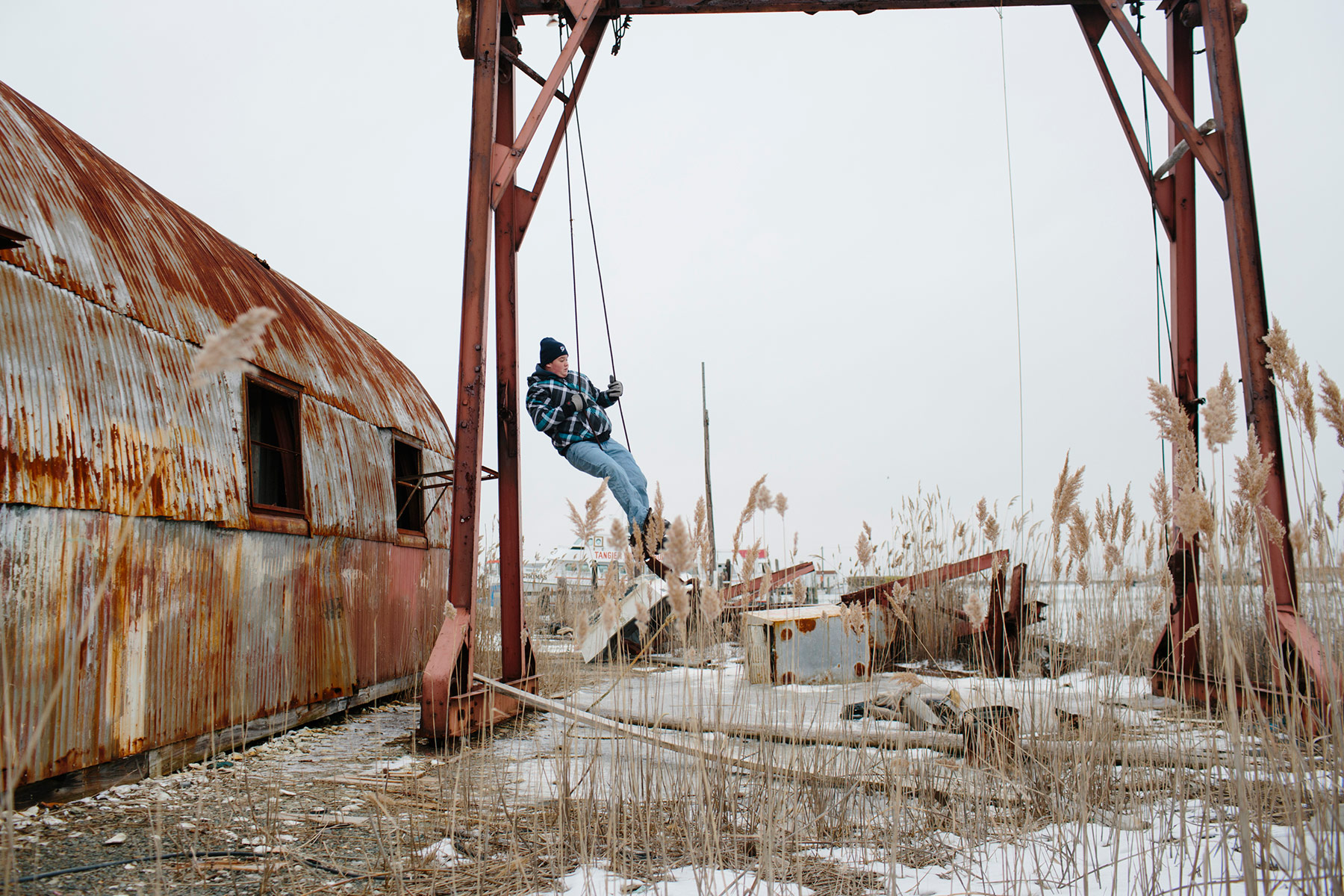




"There's a lot to do here!" one might say of Tangier — talking backwards.
Tangier has no shopping mall, no movie theater, no football field, no sports team. Just 66 students attend the island's only school, which teaches kindergarten through 12th grade. No alcohol is sold on the island.
Religion is the social glue, and members are fairly evenly split (hostilities occasionally flare) between Swain Memorial United Methodist Church and the newer New Testament nondenominational congregation. In the late '90s the town council rejected Hollywood's bid to come there to film the PG-13 romance "Message in a Bottle," starring Kevin Costner, because the script contained sex, cursing and alcohol.
For some, the smallness and quaintness of the island can be suffocating.
"Everything runs in a big circle here," said 32-year-old Brent Laird, as he painted the bottom of a boat down at the railway. "Ain't no pool hall, ain't no arcades, sure as hell ain't no bars. For a single man, there really ain't nothing to stay here for."
Nicknames abound on Tangier. There's Chowder, Seabiscuit, Monk, Hoot (who also goes by Frank, although his real name is George). Everyone knows the mayor, James Eskridge, as Ooker, after a sound he made chasing his rooster as a boy.
"Ooker" Eskridge, 55, is a tall, thin, ruggedly handsome waterman with copper hair under his red baseball cap. When he's not working on the island or crabbing on the water, Eskridge zips over to his crab shack on the Sree Devi — a motorboat named after one of his four adopted daughters — to feed the seagulls and his four cats. On the inside of his left forearm is a tattoo of an ichthus with "Jesus" written inside. On the right is a Star of David, to show his support for Israel and biblical literalism.
But Eskridge isn't here to talk religion, but rather the problems facing Tangier and its watermen.
First there's the license moratorium, started in 1999, to reverse the effects of overfishing in the bay. With no new licenses, it's tough for young people to enter the fishing business. There's also the increased cost of working on the water — higher prices for fuel, bait, crab pots and the zinc bars needed to prevent the pots from rusting. But the biggest blow, he said, is the crab sanctuary.
"You do need regulations, don't misunderstand me. And you need laws concerning the harvesting of crabs and fish and the oysters," he said. "But it seems like they took it too far. You can regulate people out of business."
In 2000, the VMRC instituted a crab sanctuary that runs every year from May 16 through Sept. 15 and covers the heart of Virginia's portion of the Chesapeake Bay. The region from Maryland just north of Tangier all the way down to the mouth of the Chesapeake Bay is covered by the same dates, even though water temperature (which determines where crabs are) varies considerably.
When the crab season starts March 17, the crabs are only in the southern part of the bay. By the time they migrate north around Tangier, in mid- to late April or even early May, Eskridge said, there's not much time left before the sanctuary closes May 16.
"A lot of the guys around here, they're just getting started good, and then the date rolls around and they have to get out," said Eskridge. "They have to stop making a good day's work and actually move their pots to where crabbing's not so good."
Tony Watkinson, habitat director at the Virginia Marine Resources Council (VMRC), said Virginia's crab sanctuary protects an area believed to be a corridor for female crabs. He said Tangier is strongly affected, due to its northernmost location, but the watermen aren't without options.
"There's two types of thoughts about fishing and crabbing," said Watkinson. "One, there are those who want to be able to fish or crab fairly close to where they live, and that is a very traditional philosophy that not only Tangier has but it's shared by our upriver fishermen. The other thought is that there's a mobile aspect to the harvesters."
In other words, Tangier watermen could take their boats south at the start of the season, staying in a motel on the mainland for a stretch to catch crabs in the lower part of bay before they reach Tangier.
While Watkinson believes it's time for a new census to make sure the sanctuary boundaries and dates are still appropriate, he said the license freeze won't be lifted — overfishing remains a problem.
Eskridge, however, says increasing population along the coasts is to blame for problems in the bay, and the watermen are just a cheap and easy scapegoat.
"Nobody wants to see a healthier Chesapeake Bay than the watermen do," he said, "because that's how we make our living."
Slideshow: Crabbing from Tangier
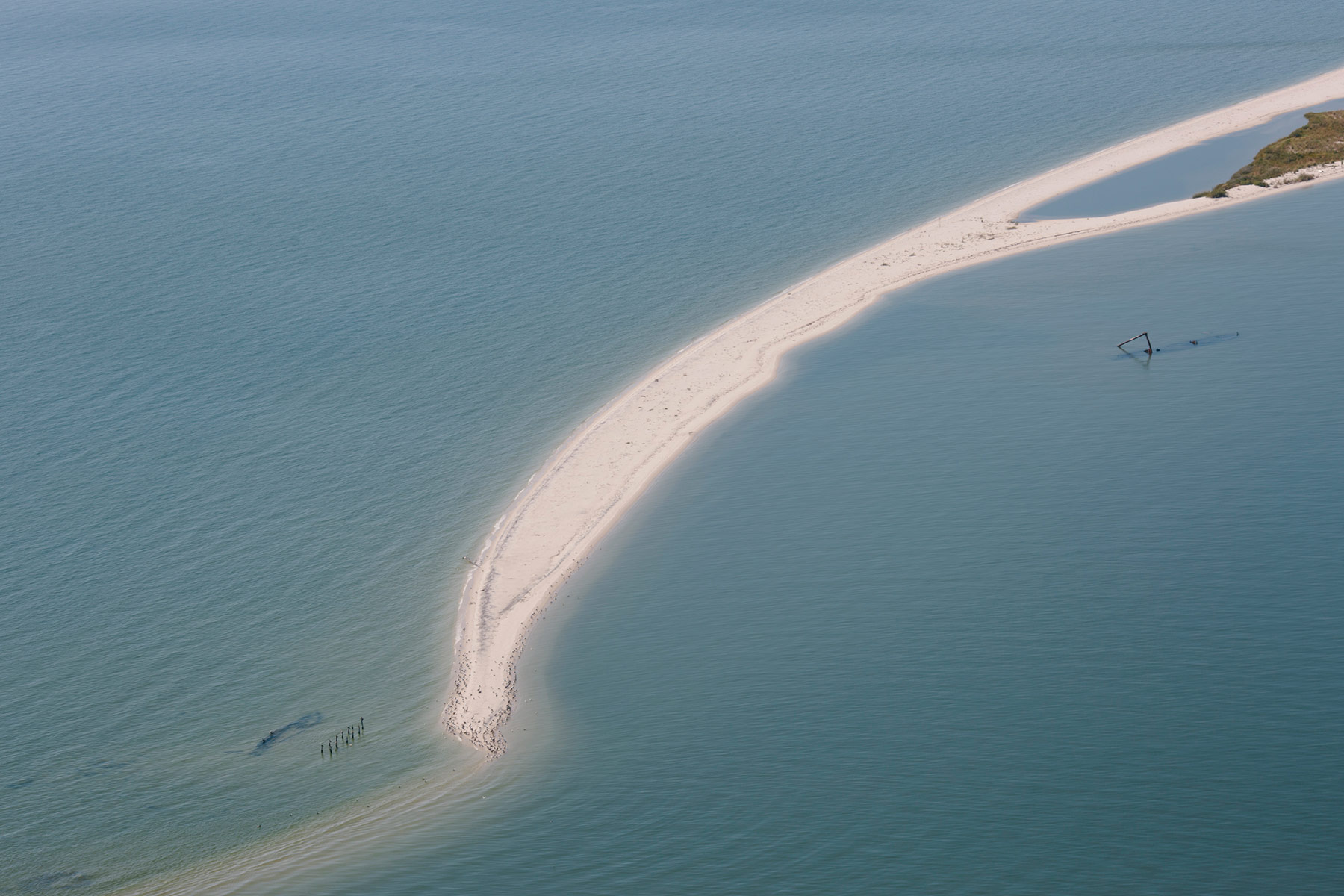
Tangier Island is both sinking and eroding. The southern end of the island, shown here, used to curve around into a full hook.


As for the island's erosion, nowhere is the situation more dire than the Uppards, the northernmost part of Tangier. The uninhabited strip of patchy beach and mostly marshland was once the town center before residents relocated to higher ground.
"My dad took me there when I was a little kid. It was full of goats and chickens and fig trees and oak trees and maple trees," said Carol Moore, a seventh-generation Tangierman. "The place I used to walk as a kid, I ride my boat now."
She feels like crying when she's there, she said.
"And sometimes I do," she added.
The Uppards has been slowly washing away for centuries, but environmental engineers say the erosion there has accelerated in recent decades. They predict the area will be underwater by 2100.
Moore slides open the drawer of her glass-topped coffee table to reveal items she's found along the beach of the Uppards: a smooth black Indian arrowhead, a white pipe she says "dates back to before Sir Walter Raleigh came to America," an antique inkwell, some fossils, tinted glass pharmaceutical bottles embossed with names like "Balsam of Life."
She's also found bodies.
Heavy storms in 2012 had left bones and coffins strewn along the beach of the Uppards. "I wasn't going to let them wash into the bay," Moore said of the exposed graves. Archaeologists helped her recover some of the remains, which dated back as far as 1895.
In 1990 the Army Corps of Engineers built a stone jetty or seawall by the airstrip to keep the erosion there at bay. Seeing its success, Tangier has been lobbying to have the seawall extended to other sides of the island. In November 2012, Virginia announced the construction of a new seawall around Tangier's harbor in 2016.
More good news came this March, when Tangier Island's historic district (essentially the entire island except the airstrip) was added to the Virginia Landmarks Registry. While nearly 3,000 sites are on that list, Marc Wagner, director of capital region preservation at the Virginia Department of Historic Resources, says "it's very unusual for us to list a whole island on the register."
The designation won't save Tangier, but makes it eligible for Hurricane Sandy funds and paves the way for the island to be added to the national historic registry — potentially attracting more tourists and advocates for its preservation.
After all, fortifying Tangier Island has critics, who believe the $4.2 million in taxpayer money that will pay for the new seawall is just one of many hefty expenses needed to stave off the island's inevitable disappearance.
But Ooker Eskridge, the mayor, sees it differently. "A lot of folks serve in the military from here. And they've gone all over the world," he said. "And now Tangier itself is in trouble. We're only a few miles from D.C., and we would like some help here."
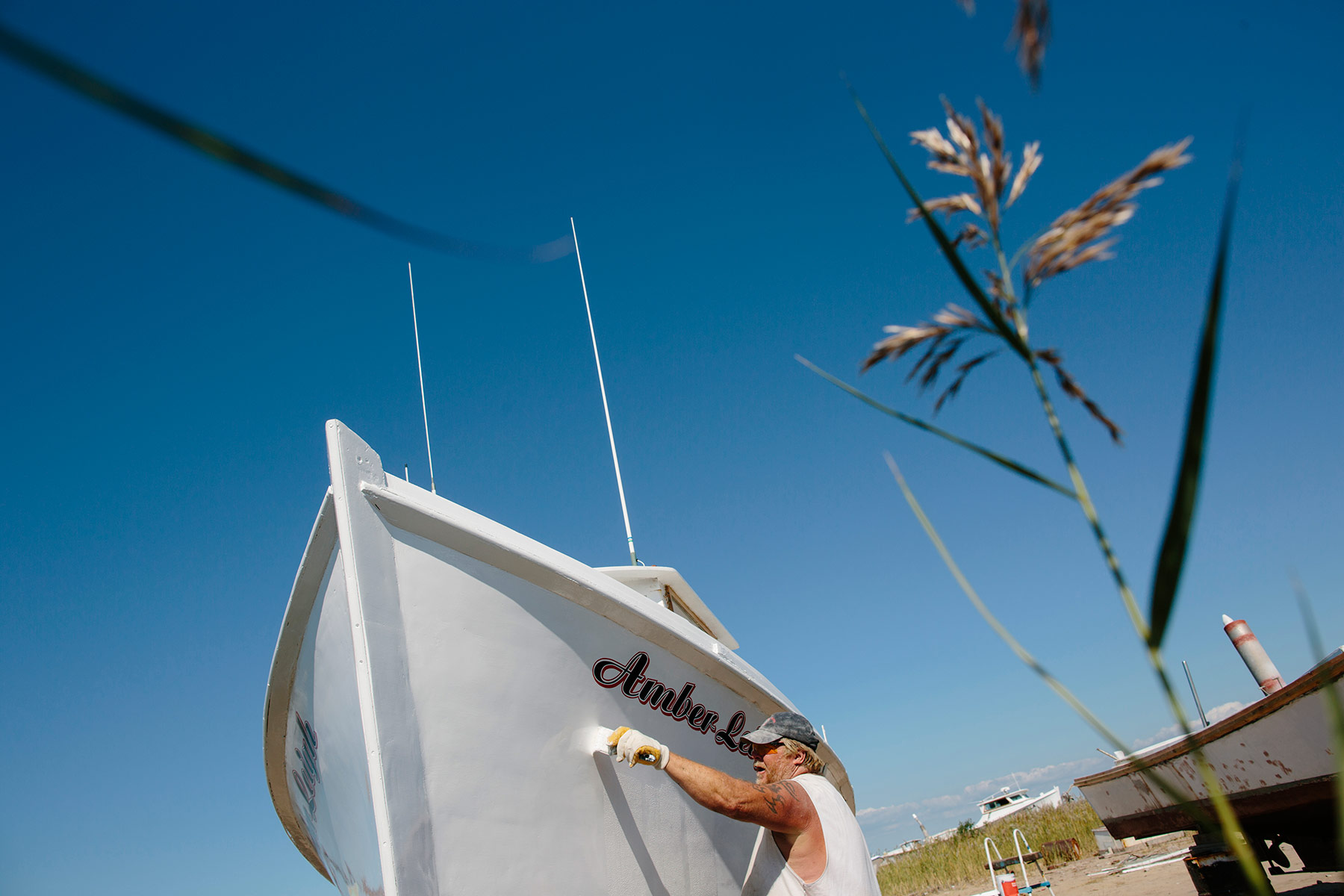
Gary Parks, 53, paints a boat at the railway, where he works fixing watermen's boats between crab and oyster seasons.

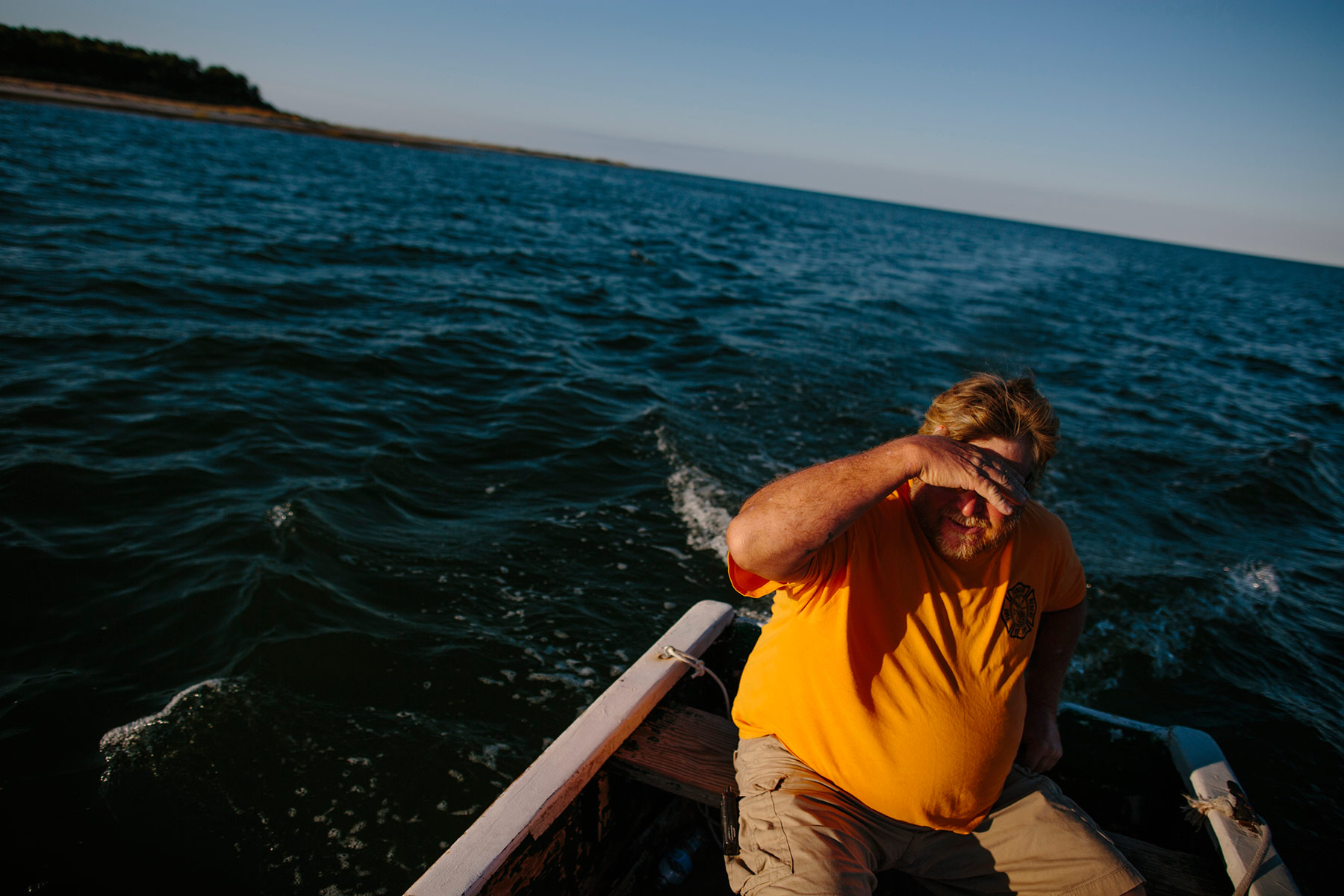
Unless Tangier is evacuated or abandoned, Gary Parks has no plans to leave. He sits in his living room recliner, not much more than an arm's length from the television facing him.
"I've been a waterman all my life and working up the railway," he said, heavy breaths punctuating his gravel-coated voice. "Ain't a whole lot out there for me. A high school education's all I got. I leave Tangier Island I'd have a hard time getting by, I believe."
Parks, 53, volunteers at the fire department and helps organize the annual homecoming, where Tangiermen past and present — those who've moved off the island and those who've stayed — reunite for an annual cookout. In other words, it's not just the work but the close-knit community that makes Tangier home.
Audio portrait: Gary Parks"I know everybody on the island. Everybody knows everybody. It's a good thing or it could be a bad thing, but most times it's a good thing," he said. "People are always willing to give you a hand, especially if you're having a rough situation like maybe your boat's tore up or sunk or you're having health issues."
Parks' son and daughter-in-law are considering relocating from Hoboken, New Jersey, to Texas. If he had to, Gary and his wife, Dixie, would probably join them, although there's not much work for a waterman in Dallas. So if the island has to go, Parks hopes it holds out at least as long as they do.
"I hope I die right here on the island. I hope it stays that long anyway," he said. "But I don't know."
